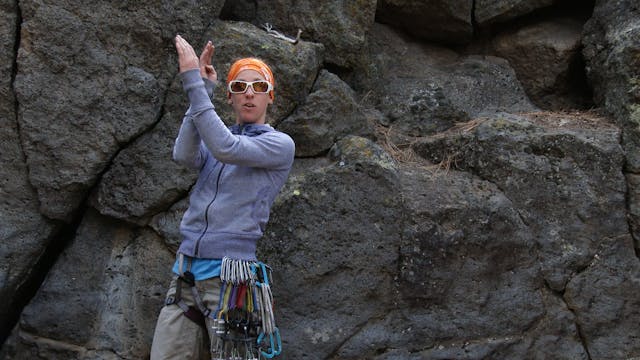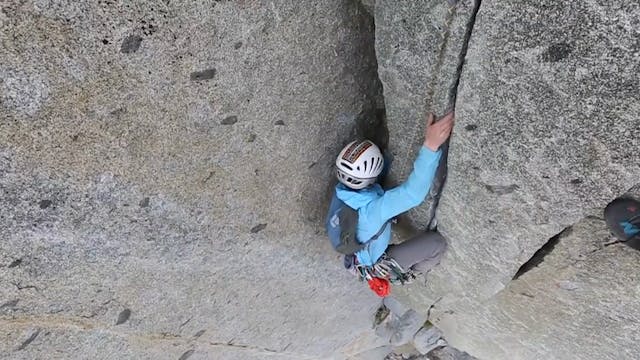Traditional Climbing: 1. Hand Jamming
Traditional Climbing
•
2m 45s
In this video we review the “hand jam”. Hand jamming is a technique used to climb cracks as opposed to featured faces or slabs.
This technique requires the climber to place their hand into the crack and tuck the thumb into the hand to create a narrow (karate chop shape) or wide (cup shape) hand jam, depending on the width of the crack (see above video for demonstration).
Two methods for using a hand jam include:
Thumbs-up - In this method, your palms are facing inward and your thumbs are up. This version of the hand jam allows you to move greater distances between jams.
Thumbs-opposed - In this method, your thumbs are pointed down, palms outward. This may feel more solid since the meat of your lower thumb is the lowest friction point; however, the distance you can move between jams is less than with thumbs-up. This is because the orientation of your shoulder joint in this position creates a slightly more limited range of arm motion.
It’s likely that while you’re climbing, the rock may dictate which method you end up using at times, but feeling comfortable with both methods is key for successful crack climbing.
A few considerations when applying either method of hand jamming include:
1. Look for constrictions in the crack which match the shape of your hand.
2. When possible try to hang with straight arms to save your arm muscles, but be sure your shoulder blades are set down and back to protect your shoulder joint! Don’t just hang like a sack of bones—use your skeleton to support you with good posture and alignment.
We hope you found this video helpful. Feel free to comment below with questions or thoughts!
Please remember, climbing is inherently dangerous. Climb at your own risk.
Up Next in Traditional Climbing
-
Traditional Climbing: 2. Crack Climbi...
In this video we review crack climbing techniques. At first crack climbing can be a painful experience, but as you start to hone in on certain techniques, you’ll find that it can actually be quite fluid and enjoyable.
Below are a few considerations for crack climbing technique:
1. Make sure...
-
Traditional Climbing: 3. Finger Locks...
In this video we review two techniques for climbing cracks: laybacking vs. using finger locks.
In any style of climbing, good technique will get you further than muscling your way through the climb. This underlines a key difference between laybacking and finger-jamming.
Laybacking - This te...
-
Traditional Climbing: 4. Toe Jamming
In this video we review considerations when toe or foot jamming to climb a crack. The difference between a toe and foot jam is how far your foot goes in the crack.
To jam your feet or toes in cracks, you use a twisting motion. The torque generates friction between your foot and both sides of t...


